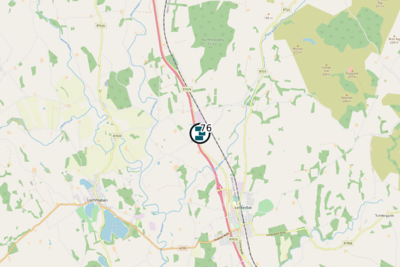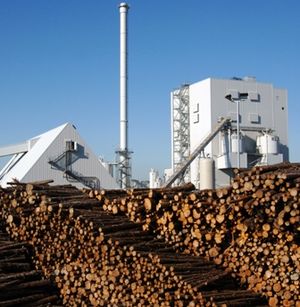Stevens Croft: Difference between revisions
m tonnage data added |
No edit summary |
||
| Line 1: | Line 1: | ||
[[Category:Biomass EfW Plants]] | [[Category:Biomass EfW Plants]]{{#vardefine: epr|tbc5}} | ||
{{BiomassPlant|NAME=Stevens Croft|id=76}} | {{BiomassPlant|NAME=Stevens Croft|id=76|EPR={{#var: epr}}}} | ||
[[File:EON-Stevens-Croft.jpg|300px|left|Steven's Croft Biomass Facility]]__TOC__ | [[File:EON-Stevens-Croft.jpg|300px|left|Steven's Croft Biomass Facility]]__TOC__ | ||
<br clear="left"/> | <br clear="left"/> | ||
Revision as of 15:58, 1 August 2022
| Error: no local variable "site" has been set. Error: no local variable "status" has been set. | |
 See Biomass EfW → page for a larger UK Wide map. | |
| Operator | Error: no local variable "operator" has been set. |
| Capacity | Error: no local variable "capacity" has been set. MWe |
| Feedstock | Error: no local variable "mainfeed" has been set. |
| EPR (Waste Licence) | Error: no local variable "epr" has been set. |
| ROC | Error: no local variable "roc" has been set. |
| CfD | Error: no local variable "cfdcap" has been set. |
| CHP | Error: no local variable "chp" has been set. |
Operators Annual Report
Input Data
| Year | Wood | Litter | RDF | Other | Total |
|---|
Output Data
| Year | IBA | IBA %ge of Tot IN | APC | APC %ge of Tot IN |
|---|

Summary
A Biomass Waste EFW CHP facility based on processing up to 480,000 tonnes per annum of Wood Waste and Biomass[1]. The plant was developed and is owned by E.ON UK and cost an estimated €132m[2].
Steven's Croft is located in Lockerbie Scotland, has an output of 44 MWe to the grid and 6.5 MWth, the facility supplies c. 70,000 homes, displacing 140,000 tonnes of greenhouse gases[1].
Construction of the facility at Steven's Croft not only included the biomass plant but a fuel processing facility and 26km of underground electrical cable connecting the plant to Chapel Cross electrical sub-station[1]. The fuel processing facility was designed to blend all the various sources of fuel mentioned above into one homogeneous material. It includes up to 14 days of round wood storage, a facility for reception of pre-chipped fuel, up to 6000m3 of covered chipped fuel storage, a round wood chipping facility, fuel reclamation and forwarding equipment with systems for final preparation of the fuel before delivery to the power plant.[1]
The facility also provides electricity to its fuel provider AW Jenkinsons and supplies heat to the neighbouring sawmill, James Jones and Sons[3].
Plant
Construction of the plant began in October 2005 with the plant entering commissioning in Autumn 2007 [2]. Construction was carried out by a Siemens/Kvaerner consortium with the boiler being a Kvaerner Power Bubbling Fluidised Bed power boiler, fuel handling and flue gas cleaning equipment[2]. The boiler conditions were designed to allow the best efficiency at 537°C, 137Bar with a capacity to raise 16 MWth of energy. The high steam conditions dictate the need for specialist corrosion resistant materials in the high temperature components and to control fuel quality.[1]
Siemens provided overall coordination, engineering and project management as well as the civil works and electrical and I&C equipment[2].
The power plant can reach full output with high moisture fuels. It is able to burn a maximum of 20% recycled wood (limited by Planning and its IPPC Permit) and a maximum of 20% short rotation coppice. Moisture Content for the plant is between 46% and 58%, with a design blend of 53%[2].
Tonnage Input/Fuel
The tonnage received by the plant is a mixture of Biomass and whilst no report is available for the most 2018-19 return, the Annual Sustainability Report for 2017-18[4] Ofgem reported the following fuel received (Wood Waste representing 21% of input):
| Biomass | Tonnage (2017-18) |
|---|---|
| Wood Waste | 81,005 |
| Other | 304,949 |
| Total | 385,951 |
The feedstock for the plant can include forest wood and agricultural residues, urban wastes and energy crops, and the feedstock split on the website is shown as comprising[1]:
- 60% sawmill co-products and small roundwood
- 20% short rotation coppice (willow)
- 20% recycled fibre from wood product manufacture.
although the Annual Sustainability Report does not breakdown the mixture of virgin wood types into their component types.
The Wood Waste tonnage received cannot be directly compared with the stated historical tonnage received and recorded in the SEPA statistics as these are recorded on a calendar year basis (i.e. January 2018 to December 2018) and no figures were available for the period.
